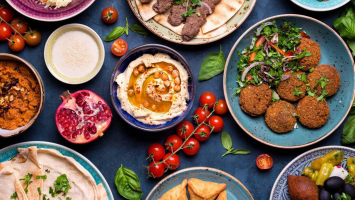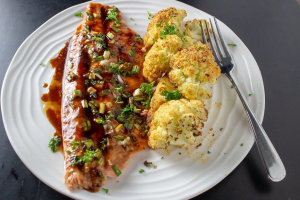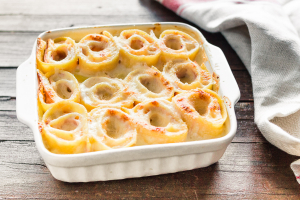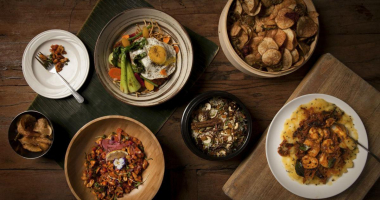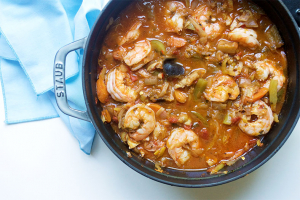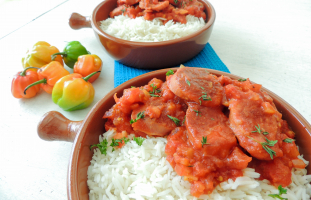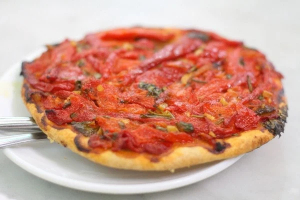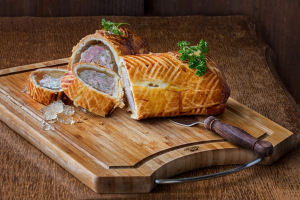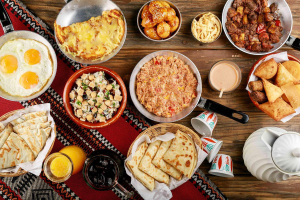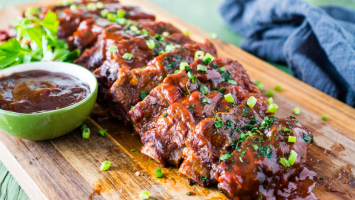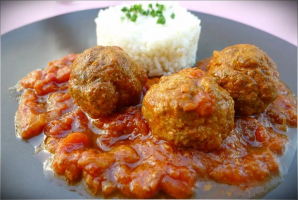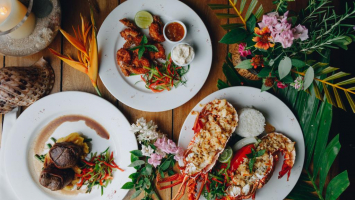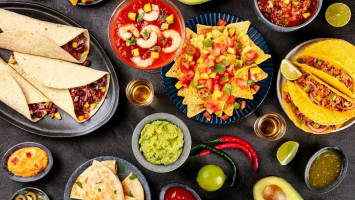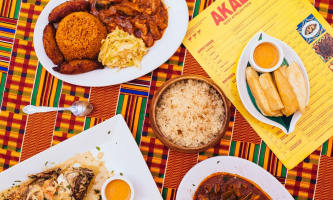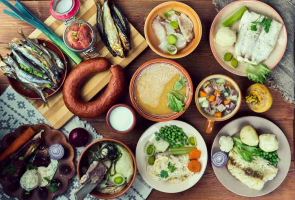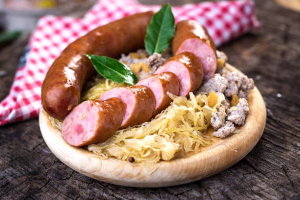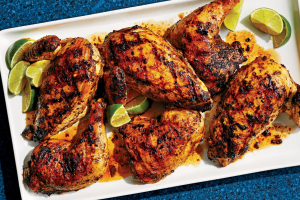Top 10 Best Foods in Jordan
Jordan, which stretches from the Syrian border to the Red Sea's coast, has long been a cultural and travel crossroads. Crusader castles perch on key hilltops, ... read more...and ancient sites chronicle the stories of Roman emperors and Nabatean kings. Conversations on the busy streets of the earth-toned capital city may have Syrian, Egyptian, or Iraqi accents, while the country's Bedouin tribes are fiercely proud of their nomadic traditions and desert heritage. Jordanian cuisine is a delectable immersion in the country's unique heritage, a dynamic blend of Bedouin flavors and local variations on the Levant's most iconic dishes, served at tables around the country. Cuisine is an important element of experiencing Jordan, whether you're sipping sweet tea in Petra or looking for the best falafel in Amman. This top ten food list is not to be missed.
-
Falafel is a famous Middle Eastern "fast meal" comprised of a chickpea (or fava bean) mixture, fresh herbs, and spices molded into little patties or balls. Falafel is claimed to have originated in Egypt, where Coptic Christians were looking for a robust meat substitute during extended periods of fasting during lent. In Egypt and the Middle East, it has also become a popular vegan dish.
Falafel is the people's daily chow in Egypt, and street sellers can be seen selling it in practically every neighborhood. It's frequently served as a sandwich with a hefty dollop of tahini and a mountain of Mediterranean salad, as well as slices of roasted or fried eggplant.
You won't believe how easy it is to make this vegan recipe with simple, ordinary ingredients. Wonderful Falafel starts with great ingredients, so invest in high-quality spices like cumin and coriander for your falafel mix.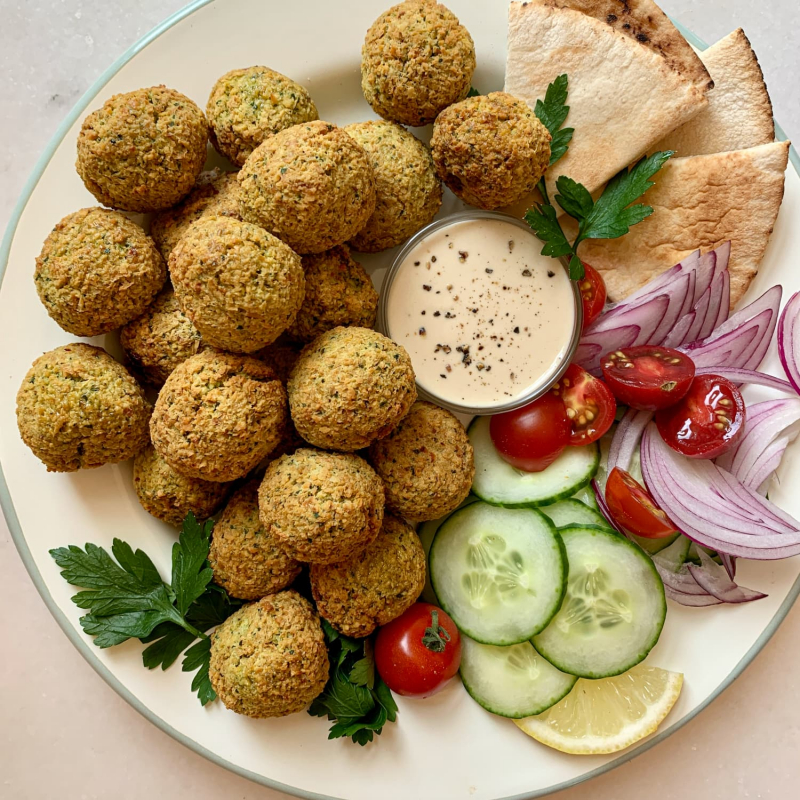
Photo: thekitchn 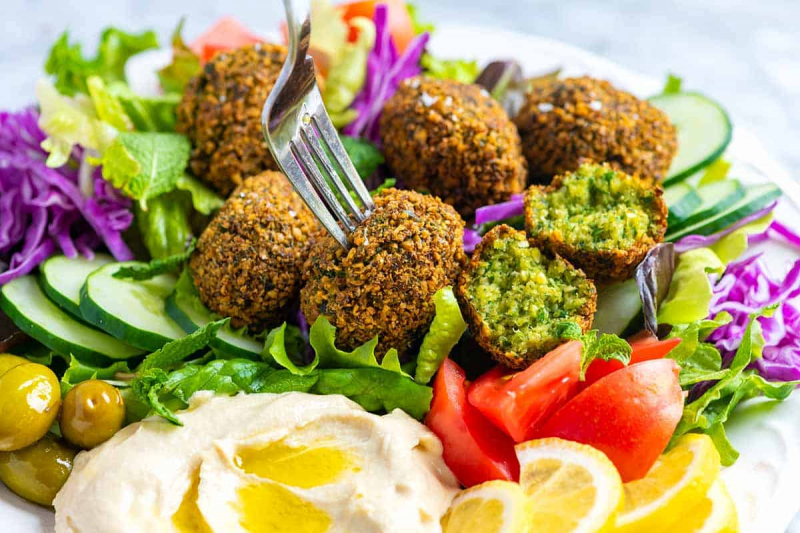
Photo: inspiredtaste -
Moutabel is a Levantine smoky eggplant (or aubergine) dish that is especially popular in Jordan. You would enjoy this with warm pita bread as part of a mezze, a large spread of appetizers like hummus, tabouleh, and other delicious taste sensations.
The addition of tahini, a sesame paste that tastes somewhat like peanut butter, distinguishes Moutabel from baba ghanoush. This makes the texture of the Moutabel much smoother, without overpowering the eggplant and garlic.
Cooking is the secret to a perfect eggplant spread. The ideal method is to flame-grill the meat, but roasting in the oven is also acceptable. It's crucial not only that the skin is blackened all throughout, but also that the eggplant has been reduced to a gooey ooze. If you think it’s done, it’s probably not done. The more you cook out the liquid and break down the fibers, the better your dip will be.
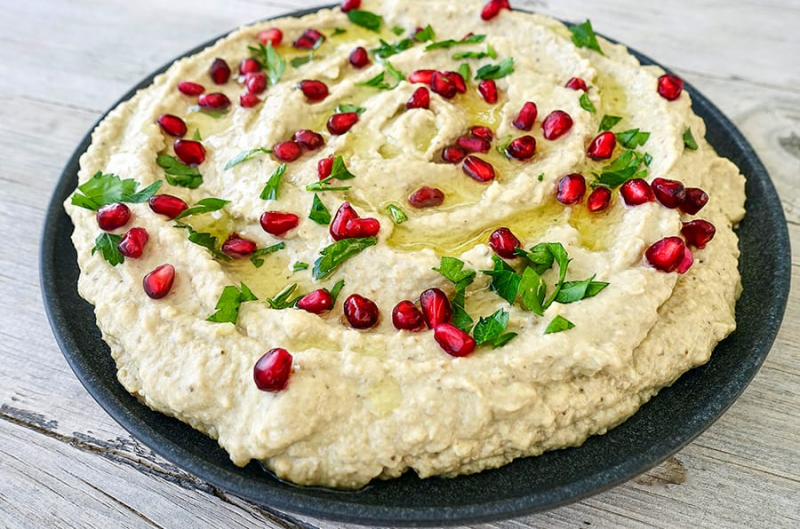
Photo: BBH Life 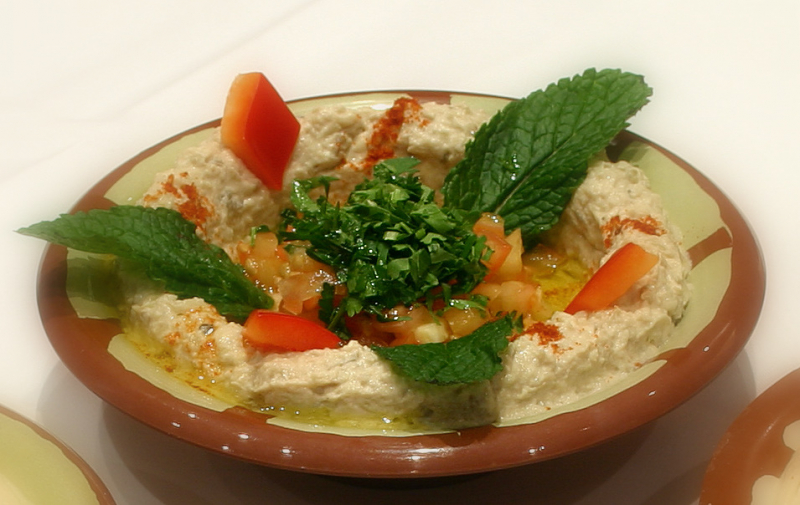
Photo: alwaharestaurant -
Hummus is a Jordanian staple that is creamy, thick, satisfying, and tasty. This delectable dish, cooked with simple ingredients like chickpeas, lemon, garlic, and tahini, is both simple and delicious. While Jordan has numerous authentic hummus recipes, each one has its own intricacies that give it its own flavor. One of the finest ways to interact with the culture while traveling in Jordan is through food. Everything you need to know about Jordan hummus is right here.
Although the origins of Hummus are disputed, one thing is certain: it is a Levantine dish with Middle Eastern roots. Hummus in Jordan, and within the region, is very different from hummus in the United States or Europe. Hummus is served as a meal rather than "simply a dip" in the Middle East. It's served in a bowl, and it's usually proportioned individually for each person or split across the table. Hummus is made fresh and topped with a variety of ingredients, including cooked chickpeas, olive oil, and seasoning, but it can also include other vegetables and meat, as well as fresh herbs like parsley, mint, and sumac. Hummus is best enjoyed with fresh pita, but is also sometimes eaten with a raw onion or served as part of a mezze.
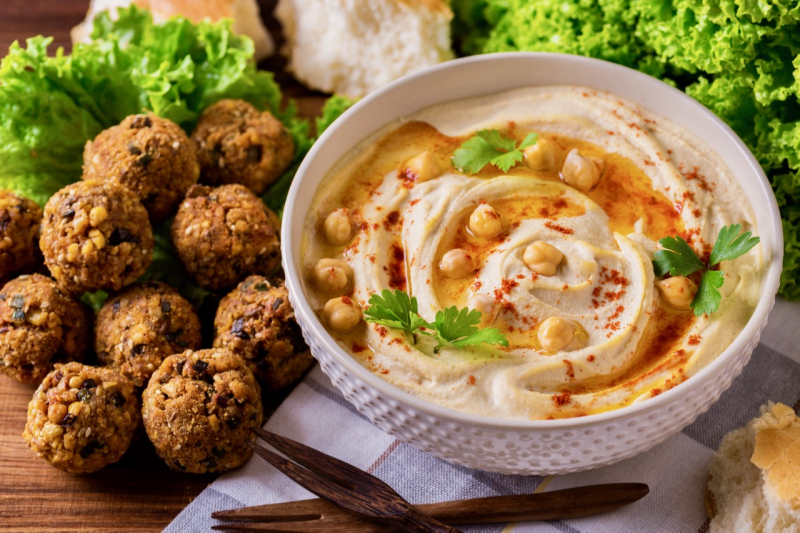
Photo: Medplus 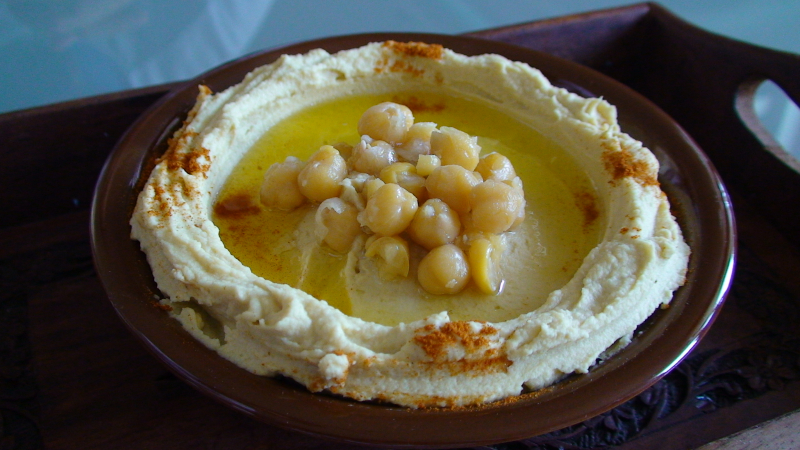
Photo: Wikipedia -
The fundamental characteristics of Labneh, a typical Middle Eastern strained yogurt made with yogurt and salt, are its creamy texture and mild flavor. It is made without any particular standards; plain full-fat yogurt is blended with salt and left to filter for 12 to 24 hours.
The yogurt whey separates during the straining process, leaving a thick and solid cheese-like result. It comes in a variety of textures, from creamy to dense, but it always has a mild, somewhat salty flavor. Although Labneh is a Middle Eastern word, strained yogurt variations can be found in a variety of nations and locations, including Greece, Turkey, Cyprus, Central Asia, the United States, Mexico, and the United Kingdom.
Cow milk is most commonly used, but other types, such as goat yogurt in Greece, are also popular. Labneh is served as part of a mezze in several Levantine nations, with flatbread and other small dishes. It can be eaten pure with a drizzle of olive oil or chopped mint, but it's also delicious spread on bread or bagels. It's used as a condiment in a variety of meat and vegetable recipes.
It can be shaped into balls and preserved in olive oil, or sprinkled with crushed nuts or spices and served as a decorative appetizer, due to its thick consistency.
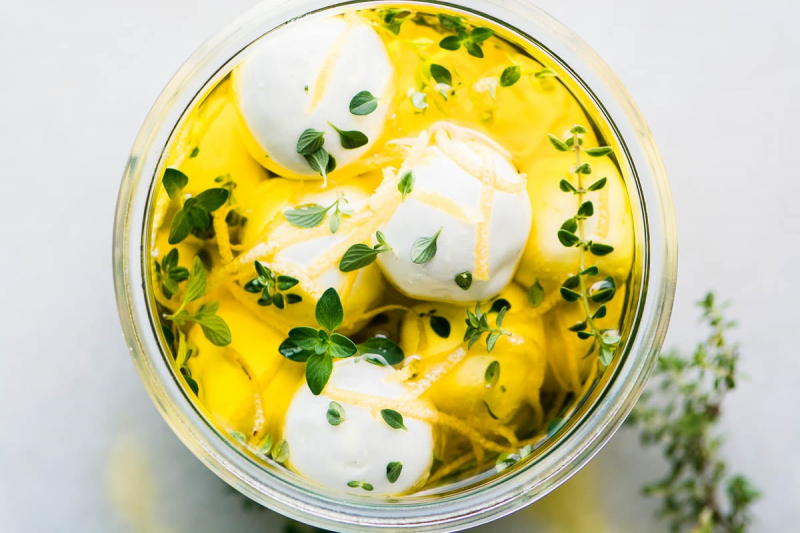
Photo: theviewfromgreatisland 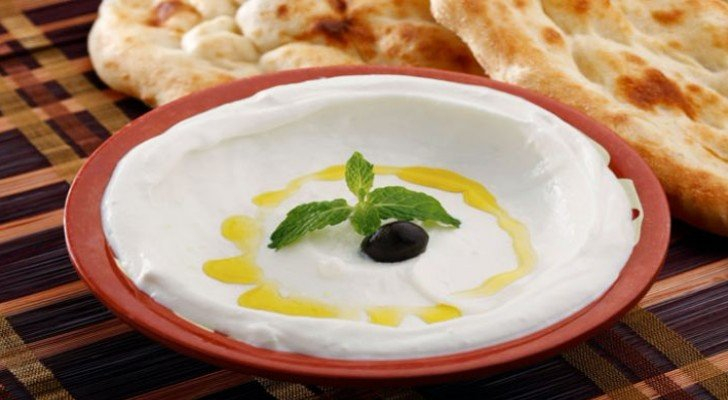
Photo: reyhanafood -
Tomatoes, onions, hot peppers (typically serranos or jalapenos), olive oil, and salt make up Qalayet Bandora, a basic Jordanian and Palestinian cuisine. It is popular throughout the Levant, but particularly in Jordan, due to its ease of preparation and nutritious components. In a big frying pan, heat the olive oil to make the dish. The tomatoes are cubed and optionally skinned, while the onions and peppers are diced. After the onions have been added and cooked until translucent, the remaining ingredients are added, and the mixture is sautéed until it is thick but not dry.
Qalayet Bandora is traditionally served with warm pita bread to scoop it up, although it can alternatively be served over rice and eaten with utensils. It is frequently garnished with toasted pine nuts when served in a restaurant or during a formal function.
Qalayet Bandora is frequently eaten while camping or backpacking because it is a simple one-pot meal.
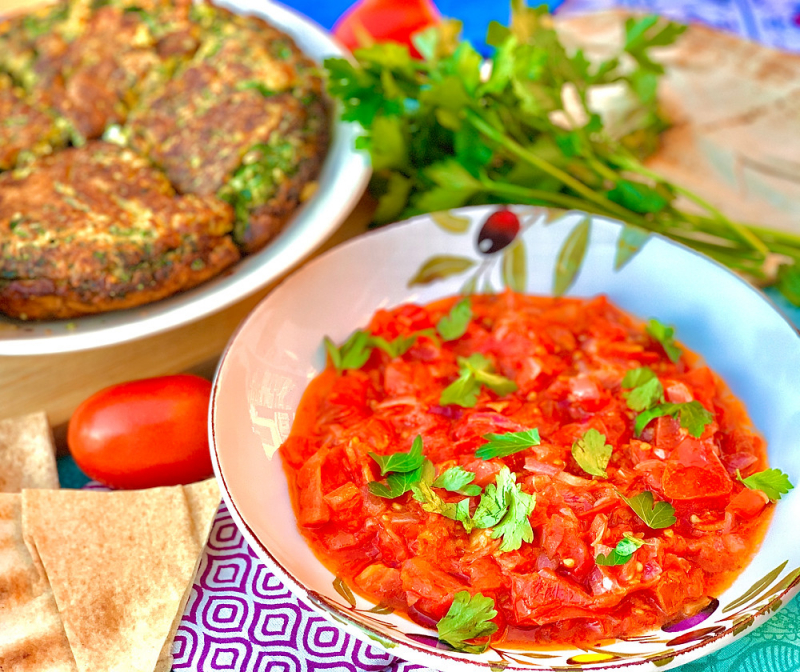
Photo: goodtastelama 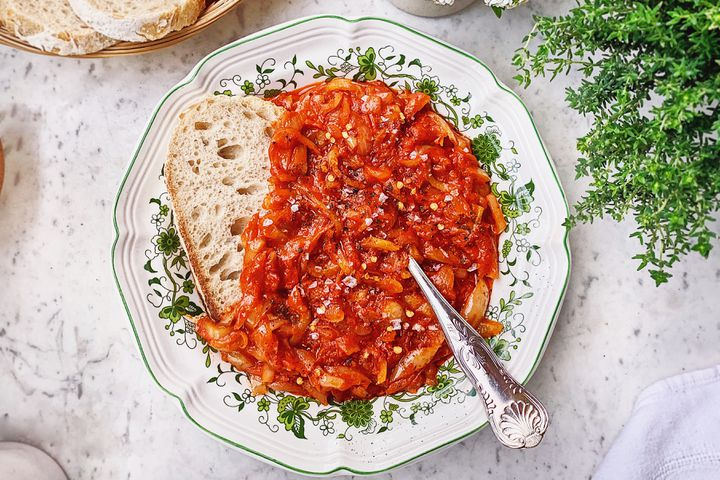
Photo: headtopics -
Manakish is a flatbread dish topped with a variety of toppings. Manaeesh, manakeesh, and mangish are some other names for it. Manakish zaatar is the most frequent type, a flatbread sprinkled in a mixture of olive oil, wild thyme, culinary sumac, and sesame seeds before baking. Breakfast and lunch are the most common times to eat these sorts of bread.
Bread flour or all-purpose flour can be used to make the dough. It's common to hear that pizza flour should be used. Flour, yeast, and salt, as well as water and vegetable or olive oil, are commonly used in recipes. The dough may rise once before shaping or may be molded after kneading and a brief resting period, depending on the recipe. It's a soft dough with just enough oil to give it a flexible rather than crunchy texture when baked.
Manakish is usually made by pressing dough into flat discs using the fingertips. This creates distinctive indentations that aid in the holding of the toppings. The term "manakish" is derived from Arabic terms that mean "decorated" or "carved out," and is frequently used to describe these indentations, which are often evident after baking.
Manakish is frequently served with tomatoes, cucumbers, and yogurt cheese. Olives and fresh mint are traditional additions to the meal, which is frequently served with hot tea. Manakish is a typical breakfast or lunch meal that can also be eaten as a meza, or snack.
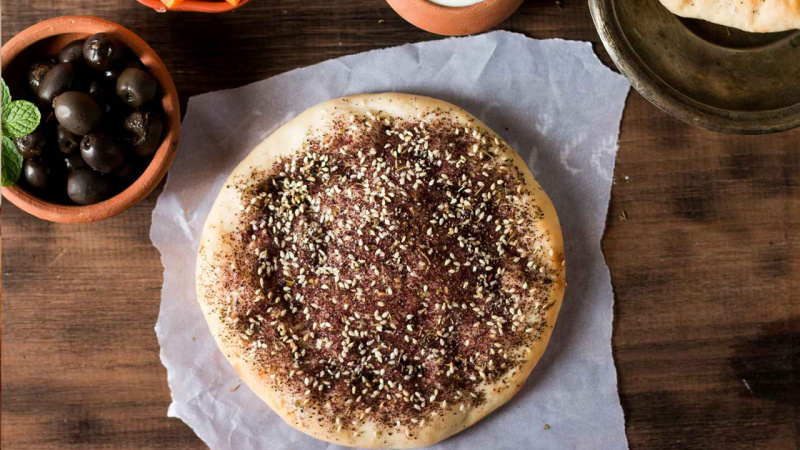
Photo: archanaskitchen 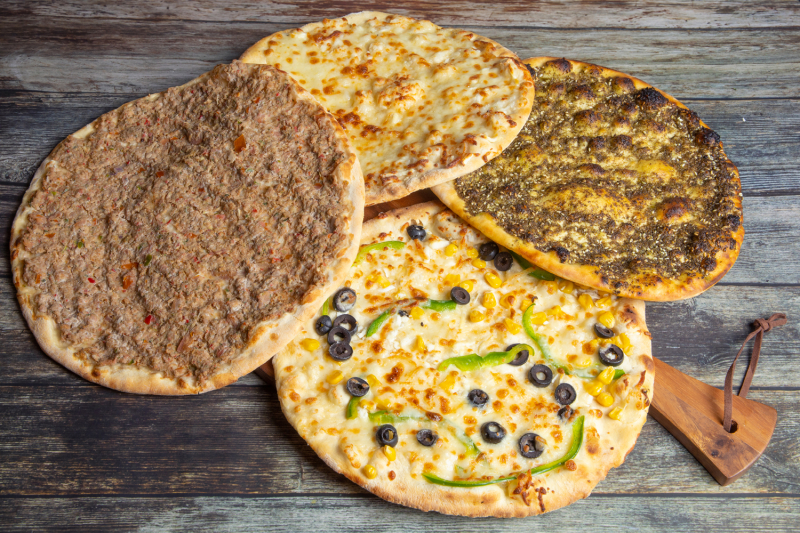
Photo: bdmbakery -
A Kaek Bread Sandwich is one of Jordan's most popular street food snacks, especially in the morning. The little personal loaf of bread is topped with a sesame seed crust and may be filled with Happy Cow favorites like cheese triangles, hard-boiled eggs, za'atar, and chili sauce. It's easy to make, tasty, and widely available.
The best way to enjoy Kaek sandwiches is to eat them while they're still hot from the oven. If you visit Amman, be sure to stop by Salaheddin Bakery, which is not only one of the city's oldest bakeries, but also sells some of the greatest sesame bread sandwiches in the city. Grab a fresh loaf, add all the toppings your self, and take a bite of one of the most incredible loaves of Kaek in Jordan.
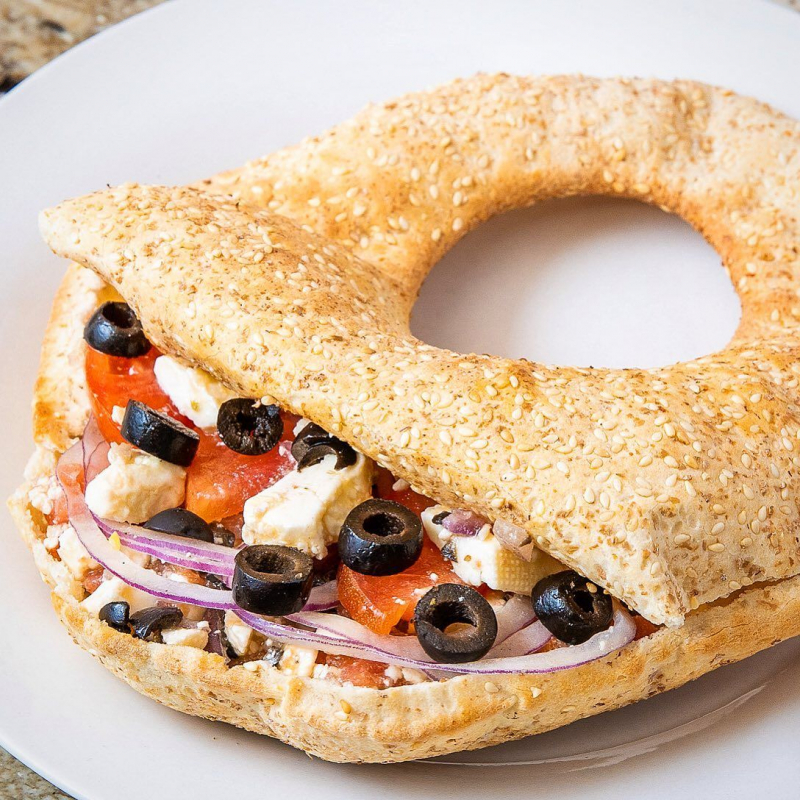
Photo: Pinterest 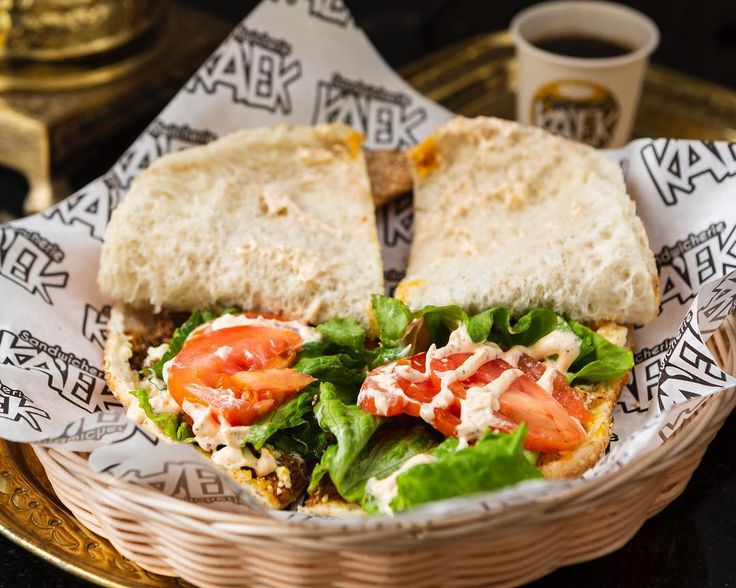
Photo: yelp -
Mujadara (or mujaddara in Jordan, Lebanon, and Palestine, and Mudardara in Syrian cuisine) is a gluten-free pilaf made with brown or green lentils, long-grain or basmati rice, and caramelized onions, seasoned with cumin and coriander and served warm, chilled, or at room temperature as a side dish. From Indian khichdi to Egyptian kushari and Iranian addas polo, this protein-rich combination of rice and lentils may be found throughout Middle Eastern cuisine.
Mujadara is a great hearty base for just about anything, from a fried or poached egg to roasted meat or grilled fish—the slight sweetness from the fried onions, combined with the aromatic spice notes, livens up just about anything— but you can also serve it with a dollop of labneh or plain Greek yogurt and a cucumber-tomato herb salad with mint and cilantro.
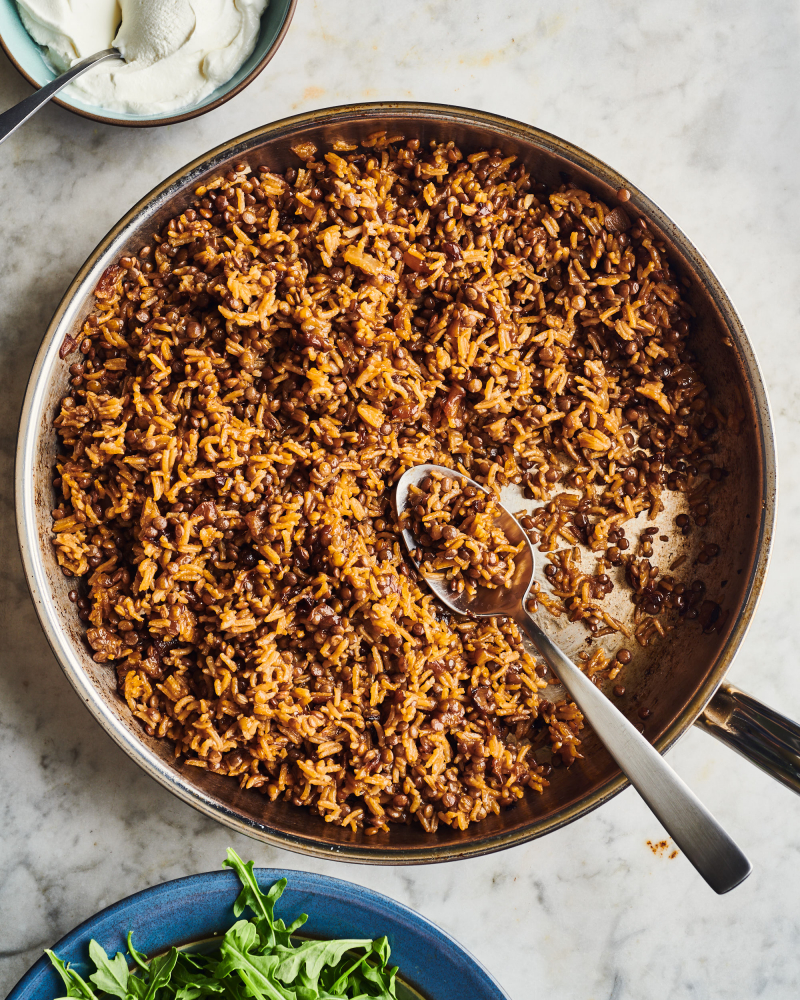
Photo: thekichn 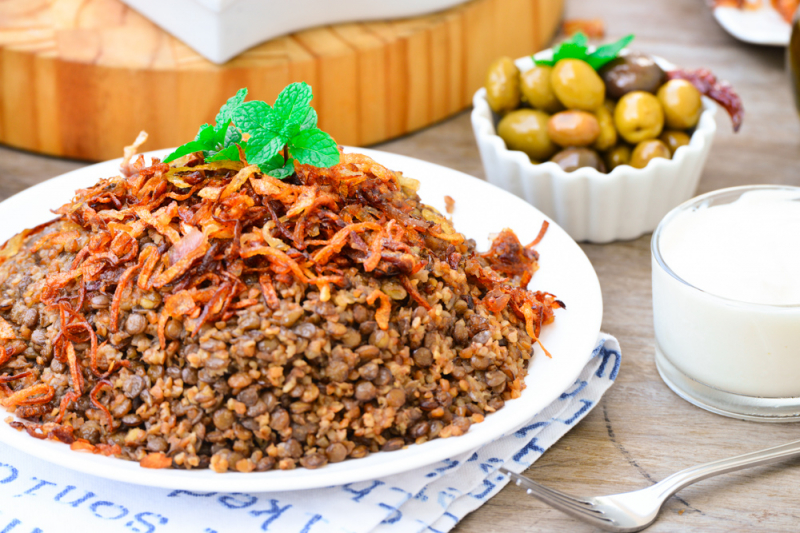
Photo: hadiaslebanesecuisine -
Shawarma is a popular Middle Eastern dish made with marinated meats including lamb, beef, or chicken. It is one of the most popular street dishes in the world, particularly in Egypt, and is now a standard at most Middle Eastern restaurants. Shawarma is a delectable dish that is sure to please meat and cuisine lovers alike.
Shawarma is seasoned with cumin, turmeric, and paprika, among other spices and flavors. It's produced by stacking thinly sliced meat on a huge rotating skewer or cone, usually lamb, beef, or chicken. It's also sometimes cooked with the meat's excess fat to give it a juicier flavor. The shawarma stack is slowly rotated for hours as it cooks in front of a heat source that roasts the outer layer repeatedly.
After the shawarma has been cooked, it is frequently sliced or shaved with a thin, long knife. All that is required is that the material be cut into thin, wide strips. The meat is then served with a variety of vegetables such as lettuce, tomatoes, pickles, and turnip in a packed pita, wrap, or sandwich. Shawarma is great since you can eat it with whichever vegetables or sauces you choose! Tahini, garlic, and hummus are the most popular sauces found in shawarma wraps. Shawarma can also be served in a bowl with various veggies, or on a platter with fries or rice, Tabbouleh or Fattoush salad, and cooked vegetables.
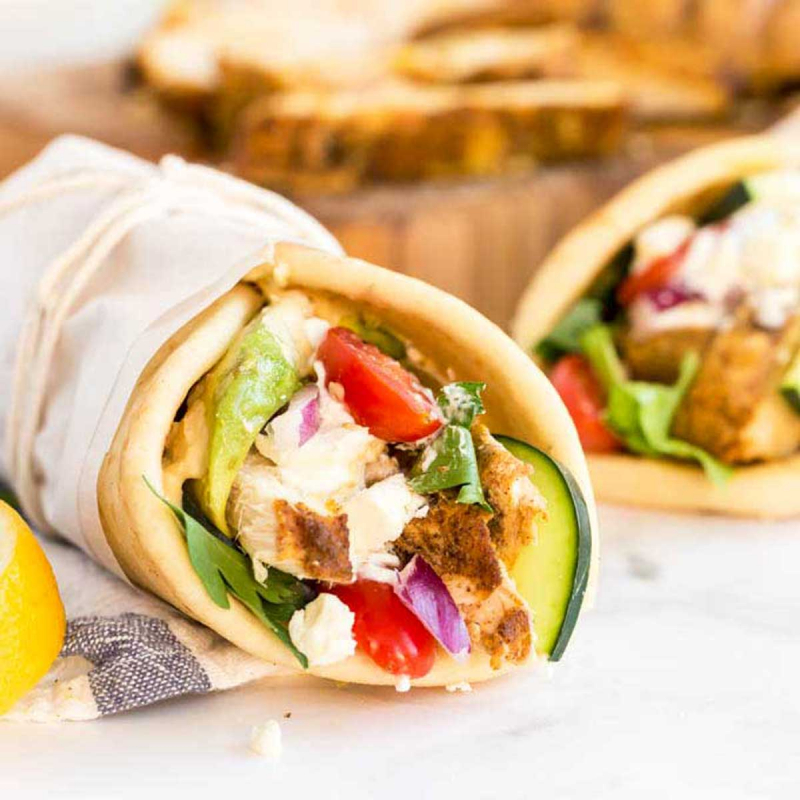
Photo: lemonblossoms 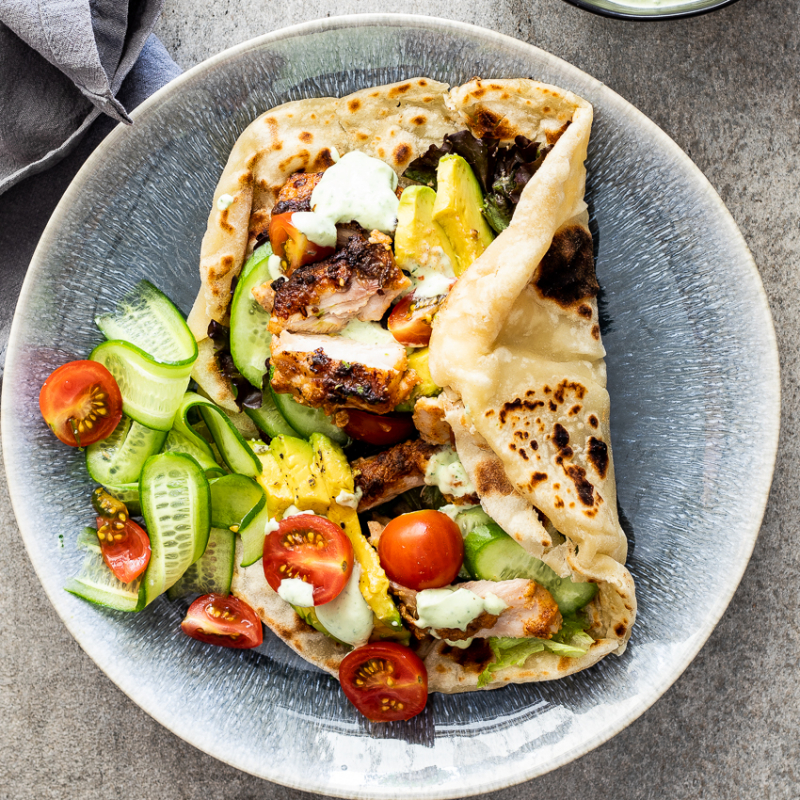
Photo: simply-delicious-food -
Shish kebabs are a popular Middle Eastern and Levantine dish made with minced lamb combined with parsley and a lot of salt, then fashioned onto large sword-like skewers and grilled over hot charcoal. The salinity of the meat, as well as the meat-to-fat ratio, ensuring that the kebabs have the most grilled flavor possible.
Lamb is used in traditional shish kebab, which is grilled hot and fast on skewers. The secret to any shish kebab recipe is to marinade the meat for long enough to infuse it with flavor. It's simple to start marinating the meat the night before or in the morning, so you can grill the shish kebabs fast for a no-fuss evening. This is a classic dish that is well worth preparing. The skewers already have the roasted vegetables on them; all you need to do now is add rice or pita. Shish kebab is often served with couscous or tabbouleh as a side dish.
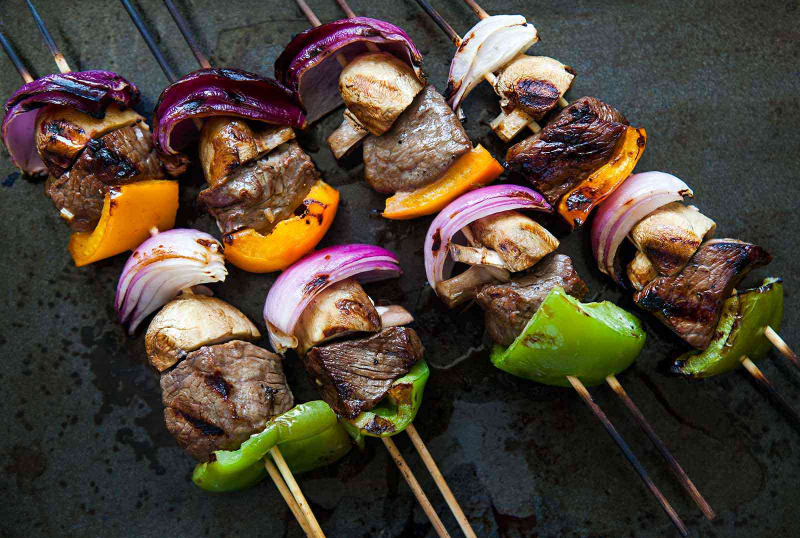
Photo: simplyrecipes 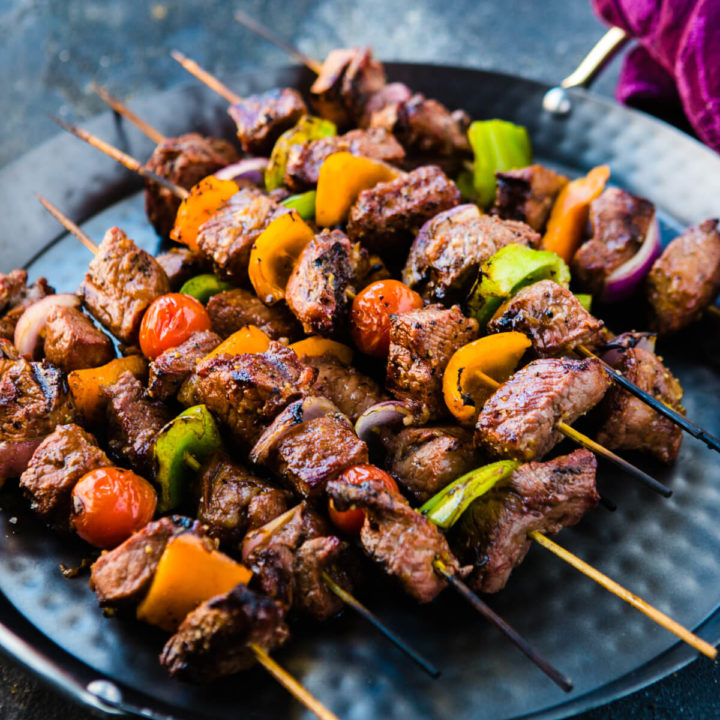
Photo: Pinterest














